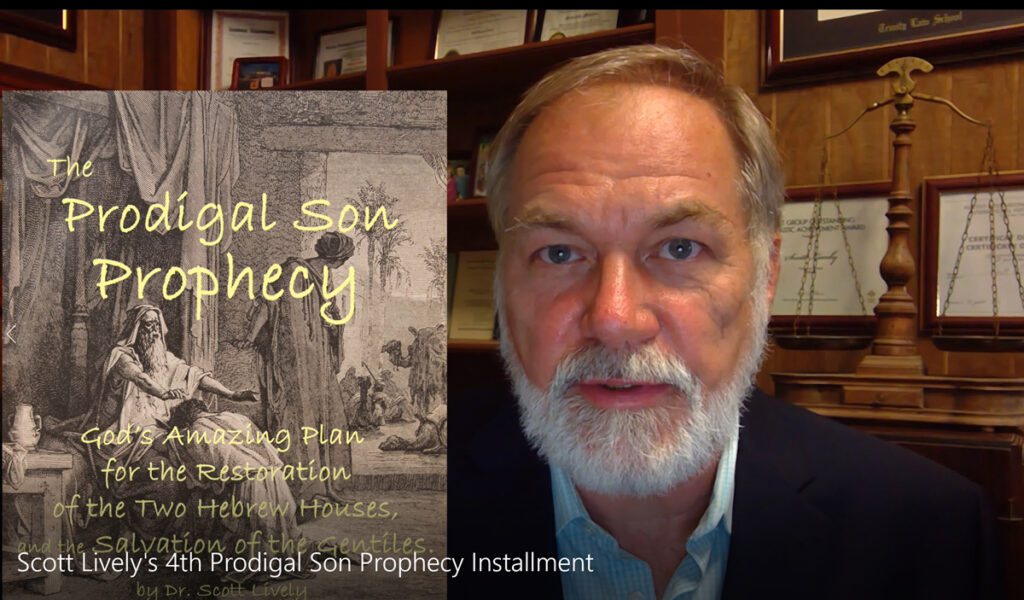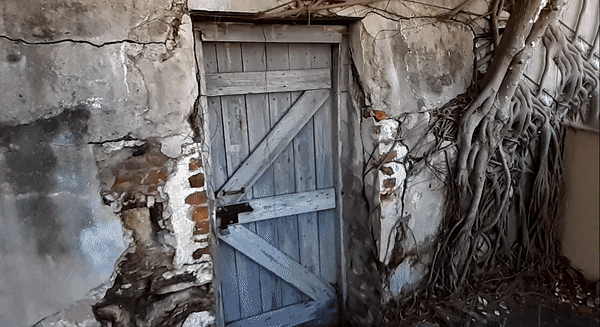
The prior installments in video and PDF may be accessed HERE
Biblical Patterns in Prophecy
I’ve been publishing my prophecy books in serial form and have this week released Part 4 of “The Prodigal Son Prophecy: God’s Amazing Plan for the Restoration of the Two Hebrew Houses and the Salvation of the Gentiles.” This 4th installment encompasses the first half of Chapter Two: “The Significance of the Sevens,” in which I address God’s timekeeping system in Leviticus 23 and 25 (which is based on cycles of seven) and other Biblical patterns. My focus in this article is the phenomenon of patterns-of-three in prophecy, specifically the pattern of three prophesied desolations of Jerusalem in the Book of Daniel and three iterations of the Passover pattern in Biblical history.
First the Daniel pattern. I believe the prophecies in Daniel regarding the desolation of the Temple are often misunderstood for the simple reason that students attempt to conflate into one prophetic event what I believe are three separate historical iterations of a thematic pattern. Complicating the matter further is the “preterist” vs “futurist” debate over the question of whether the three-in-one conflated prophecy of desolation was fulfilled in AD 70 or is a still future event.
However, by considering whether the three Daniel passages at issue describe not one but three separate events with a common theme, it is easy to recognize four common elements in each: there are three distinct Antichrist figures, three distinct “deliverer” figures, three distinct historical settings of the City of Jerusalem, and three distinct Abominations of Desolation. (Importantly, it is God, not Antichrist, who desolates the land as an act of judgment on mankind –for the land’s sake – a point I explain at length in the chapter.)
Daniel 9:24-27 is chronologically the second iteration of the Desolation of Jerusalem pattern, though first in order in the text. In it the Antichrist figure is the Roman General Titus, later to become Emperor. The deliverer figure is Jesus. And the setting is the City of Jerusalem in the last generation before the destruction of the Second Temple. The Abomination of Desolation could have been the decree of the Jewish religious authorities rejecting Jesus, and if so, the sentence of desolation was judged by Christ in Matthew 23:37-38, and executed by Titus in 70AD. Alternately, the Abomination of Desolation could have been the statue of wicked Emperor Caligula erected in the Temple in 40AD, punished in 70AD.
Daniel 11:29-45 is the first iteration chronologically but second in order in the text. The Antichrist figure is Antiochus IV Epiphanes. The deliverer figure is Judah Maccabee (Judah the Hammer), founder of the Hasmonean Dynasty of Hebrew Kings. The setting is the City of Jerusalem in 167BC and the Second Temple. The Abomination of Desolation of Daniel 11:31was likely a bust of Antiochus himself, placed on the Altar of God.
Daniel 12:1-4 is the third, still future iteration of the Desolation of Jerusalem pattern. The Antichrist figure will be the end-time Antichrist. The deliverer will again be Jesus Christ. The setting will be the City of Jerusalem during the reign of the Antichrist, and either a rebuilt Third Temple, or possibly just the altar (for which we see a precedent in Ezra 3:1-6). The Abomination of Desolation is not clearly identified, but could very well be some artifact that depicts the Antichrist as God, set up on the altar.
Importantly, there are numerous elements of the prior two iterations of the pattern which may or not be present in the end-time iteration. For example, much attention is given by prophecy teachers to the actions of the “King of the North” and “King of the South” in their predictions about the end-times Antichrist. They may be correct, but it is also possible that those elements were unique to the first iteration, as indeed they precisely describe the people and events of Antiochus’ time as detailed in the apocryphal books of 1 and 2 Maccabees. Might these elements be repeated identically in the third iteration? Perhaps. Must they be? Not in my opinion.
Now to the Passover pattern on the theme of resurrection, which also has three distinct historical iterations and four common elements: a father, a first-born son, the sacrifice of a sheep, and an object on which the sacrifice was given effect.
Genesis 22:1-13 is the first iteration: the near-sacrifice of Isaac by Abraham. Abraham was the father ready to sacrifice his first-born son on God’s command, but God provided a substitute: a sheep. The sheep, instead of Isaac, had its blood shed upon an altar. “By faith Abraham, when he was tested, offered up Isaac on the altar…reason[ing] that God could raise the dead, and in a sense, he did receive Isaac back from death” (Hebrews 11:17-19).
Exodus 12:1-13 is the second iteration. All the firstborn males of Egypt were to be killed by God as punishment for Pharaoh’s slaughter of the Hebrew firstborn during the infancy of Moses. Only those households displaying the blood of a sacrificial lamb on the lintels and doorposts of their homes were spared. The father figure is Pharaoh, and his firstborn son was the first to suffer God’s wrath. The sheep is the Passover lamb. The object on which the sacrifice is given effect is the doorframe of the house.
The Gospels describe the third iteration: the story of the Christ’s crucifixion which occurred literally, on Passover: “For Christ our Passover also has been sacrificed” (1 Corinthians 5:7). The Passover pattern was completed in the sacrifice of Jesus. The Father is God. The son is Christ. The lamb is Christ. The object on which His shed blood was given effect was the cross.
So we can see that God uses thematic patterns in the Bible to describe actual events of history, and that the iterations of these patterns, though they share common thematic elements, are each unique.
Recognizing that Biblical history sometimes repeats in non-identical but thematically related patterns is a major game-changer for prophecy study for those capable of separating Biblical doctrine from denominational dogma.
###



